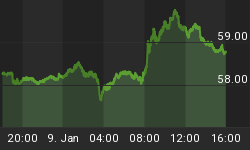Which market are you watching?
If you're like most investors, you are probably acutely aware of the Dow and its fluctuations. Although the Dow is our favorite basket of 30 domestic stocks, it has only moved a few percent over the past couple of years while much more interesting movements have happened in international stock markets. With all the media and advertising attention on American stocks, it's possible you might not be aware of today's major international stock market bubble. In this article, I will describe this stock market bubble as I see it.
Global capital flow, speculation
While American and Japanese stock markets dominate the world in terms of market cap, several smaller stock markets have been the big growth story during this 2003- credit boom. Mutual funds and many new ETFs (Exchange Traded Funds) make it easier for small and large investors to tap into these previously inaccessible markets. Major growth areas include Central Europe and Russia (49% per year over three years) and Latin America (47% per year). Even broad index ETFs such as MSCI Emerging Markets (Asia, Africa, South America) show an amazing rise of 36% per year. Most of these stock indices have more than tripled since 2002, in US Dollar terms.


I am calling this a stock market bubble because of the massive and unreasonable rise, with periods of sharp simultaneous selloffs even in unrelated markets. Investors are speculating heavily and the sharp selloffs show how quick the big boys can yank their capital. Most recently, we saw a nearly 30% drop in May 2006 followed by double-digit rallies in just two weeks. This is some fast, speculative action.
The Dollar, then and now
Times were, you would borrow dollars for next to nothing (remember Greenspan's 1% rates?) and trade them for things like real estate, commodities and international stocks. One of the consequences of this "free money" has been a falling dollar, in real terms (compare to other forex, gold, commodities). The U.S. Federal Reserve has, appropriately, been raising interest rates to defend the dollar and control the runaway inflation sparked under Greenspan's leadership.
Note that interest rates are substantially higher now than when the Fed started tightening. Margin interest rates are higher too, and free money is getting harder to come by. This is a global phenomenon, since Japan and Europe have also advertised a firm intention to raise rates.
The point is that leveraged speculation is becoming less profitable, and investors will eventually have to sell international stocks. The risk/reward picture is rapidly changing.
How will markets behave now?
Remember that world markets are heavily indexed, made easier recently with so many new ETFs. This heavy indexing moves stock markets together, meaning that markets as different as Japan and Canada tend to rise and fall together. The recent global selloff in May 2006 provided the best evidence of this. Virtually every stock market around the world fell at the same time, including the USA. I continue to expect international stock markets to move together. So much for investing on fundamentals!
Volatility and the danger of timing
Speculators look like smart investors as long as they are making money, but the volatility that comes with a topping market can leave both bulls and bears in tears. In May 2006, Brazil fell 30% from its peak and then rallied back another 20% in a matter of weeks. Investors should also remember the Nasdaq in 2000, where a 30% drop was quickly followed by a 25% rally (can you really short that?). Volatile markets are a dangerous place to gamble, especially when there is evidence that a stock market bubble might be bursting. Those trying to time market rallies or selloffs should be able to stomach large losses.
Many other stories
As always, there are many current stories in financial markets and many of them are related. The US yield curve has inverted again. The Fed rate is now 5.25% and the 30 year treasury yields 5.20%. With this kind of return on cash/t-bills, one wonders who is buying REITs or even the Nasdaq. Extreme optimists with no fear, I guess! But when I look at the risk/reward situation in the marketplace I have to conclude that all is not well in Credit Land. If I was long stocks/bonds/MBS/REITs I would be very nervous.















